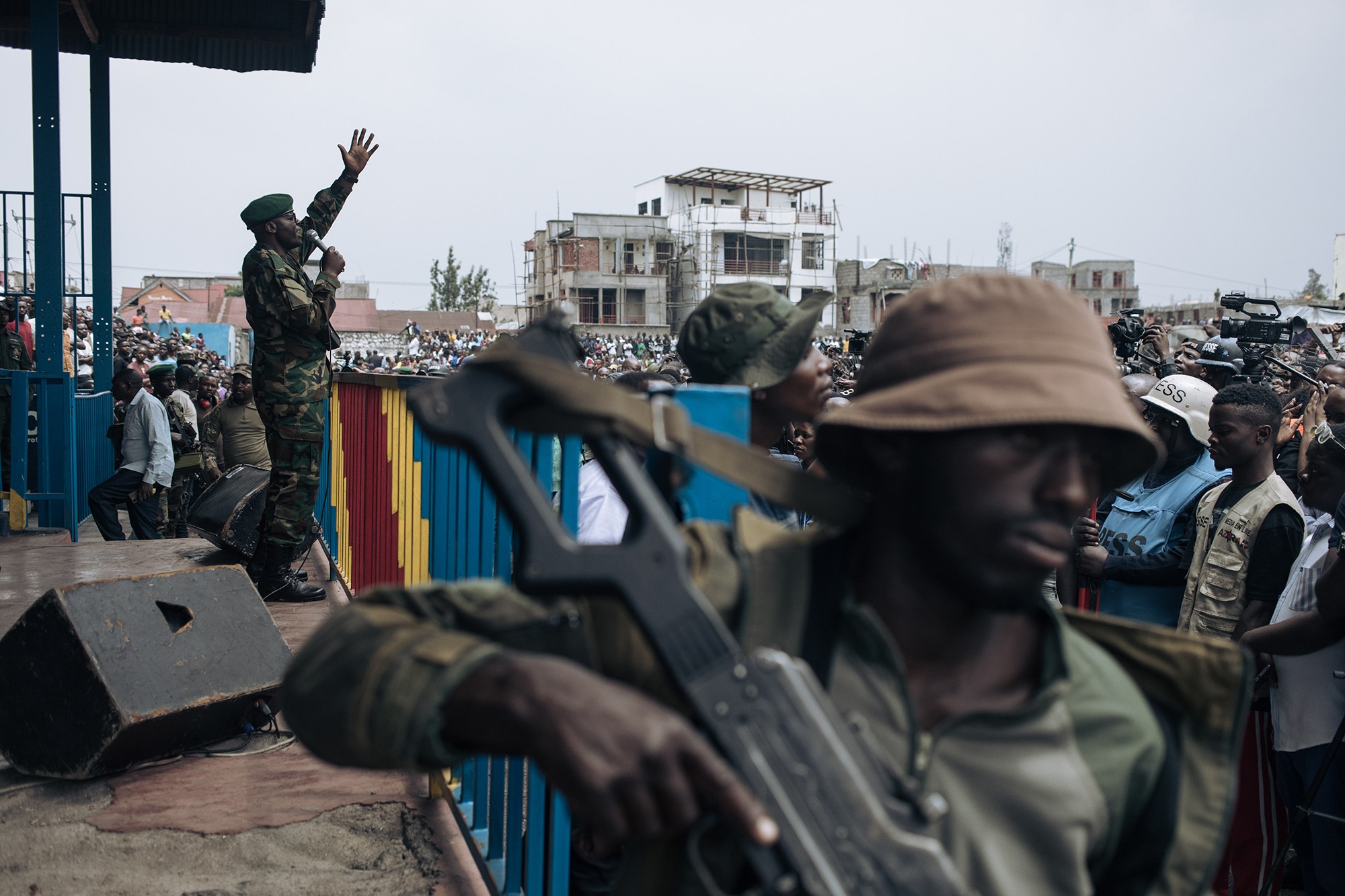Goma, the turning point
© Alexis Huguet / AFP
From October 6 to November 9
Goma, the turning point
At the end of January 2025, following a lightning offensive, Goma, the capital of North Kivu in the east of the Democratic Republic of Congo (DRC), fell to the armed group M23. Created in 2012 by rebel officers belonging to the Armed Forces of the Democratic Republic of Congo (FARDC), the M23 is supported by Rwanda, according to the United Nations. This is one of the last convulsions of a conflict that began 30 years earlier with the Rwandan genocide of 1994.
The capture of the city was preceded by five days of violent clashes between M23 and FARDC. The number of civilian casualties – men, women and children – remains controversial. Hospitals and morgues were quickly overwhelmed. More than 650,000 displaced persons were living in camps around Goma, having fled fighting in the region in recent years. They were trapped in the fighting and tried repeatedly to flee, terrified and with nowhere to go.
Goma is now a city governed by the Congo River Alliance/M23, which has set up a parallel administration. However, the banking system is down, food prices have skyrocketed and the airport has stopped operating. In the months following this upheaval, most neighbourhoods are affected by insecurity. Sexual violence remains widespread.
The exhibition offers a variety of perspectives from Congolese and international photographers who documented the few days during which the fate of Goma, a city of over a million inhabitants, was turned upside down, as well as the daily lives of the Congolese men and women who still live there, isolated from the rest of the DRC.
Photographers: Philémon Barbier, Daniel Buuma, Alexis Huguet / AFP, Hugh Kinsella Cunningham, Michel Lunanga, Jospin Mwisha, Moses Sawasawa
—
Musée d’Art et d’Histoire Baron Gérard
37, rue du Bienvenu
Open every day 10 am to 12.30 pm and 2 pm to 6 pm
Free Admission
This exhibition was created in association with MSF


Musée d’Art et d’Histoire Baron Gérard
